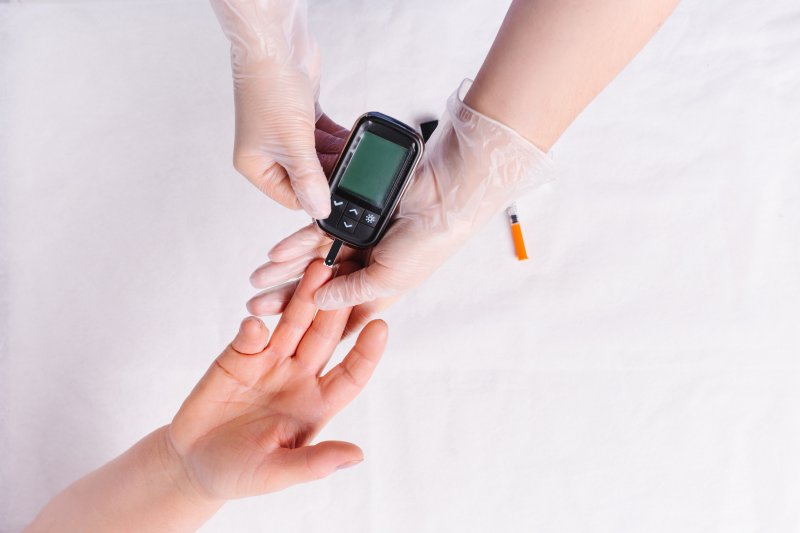How Does Living with Sleep Apnea Affect Those with Type 2 Diabetes?
October 17, 2024

When it comes to sleep apnea and type 2 diabetes, it is often a debate as to which one causes the other. Similar to the age-old question of which came first, the chicken or the egg, the only certainty is that living with both conditions can feel like a no-win situation.
However, seeing a sleep dentist can be highly effective in addressing symptoms of chronic fatigue – a factor that can have a significant role in managing your type 2 diabetes. Keep reading to learn about the connection between the two and why sleep apnea treatment can be a helpful step in the right direction.
The Connective Link: Sleep Apnea and Type 2 Diabetes
Of the three types of sleep apnea, obstructive sleep apnea (OSA) is considered the most common among individuals with formal diagnoses. The inability to breathe freely because of a blocked airway causes individuals to wake up suddenly gasping for air and struggling with daily chronic fatigue.
This continuous problem can have troublesome effects on a person’s overall health, especially if they are already living with type 2 diabetes.
Since obesity is a common risk factor for sleep apnea, it is not unheard of for individuals to develop type 2 diabetes or experience greater difficulty managing high blood sugar levels.
The reality is that the more fat that exists around the neck, the more likely the airway will become compressed, making it harder to breathe while sleeping. But a person’s weight is not the only problem these two conditions share; in fact, oxygen levels also play a pivotal role.
When a person cannot breathe because of a blocked airway, their body no longer receives the oxygen it needs, which leads to an increase in carbon dioxide in the blood. Insulin resistance then begins to rise, resulting in higher glucose levels. The more this happens, an individual is likely to develop problems with their A1C – a measurement that determines how much sugar is in the blood.
Without proper treatment for one’s sleep apnea, the chances of developing type 2 diabetes are much greater. Or, if a person is already living with high glucose levels, untreated sleep apnea can exacerbate symptoms over time.
How Can Sleep Apnea Treatment Help?
Whether a person is looking to avoid the potential for type 2 diabetes or better manage their blood sugar levels, it’s important that they see a licensed sleep dentist for help.
Undergoing treatment for OSA can have a positive impact on their overall health. Not only will they begin to achieve better rest, but they’ll also be able to breathe without fear of an obstruction forcing them awake suddenly.
Once a formal diagnosis is provided, a sleep dentist will recommend the appropriate method of treatment, which may include CPAP (continuous positive airway pressure) therapy, oral surgery, or oral appliance therapy (OAT).
The last option is becoming increasingly popular, as it allows individuals to comfortably treat their OSA by wearing a small, portable oral appliance. When worn correctly, the jaw moves forward slightly, preventing soft oral tissues from collapsing onto one’s airway.
By combining sleep apnea treatment with proper diabetes management from a local physician, patients begin to rest better while also enjoying a better quality of life.
About the Practice
Sleep Dallas is pleased to have multiple sleep dentists and specialists on staff who work closely with patients suffering from various sleep disorders. When treating an individual with type 2 diabetes, we offer comprehensive solutions that address the root of the problem, not just the symptoms. Whether it is with CPAP therapy, an oral appliance, or a more invasive option like surgery, we can deliver life-changing results. Contact us to learn what we can do to help you enjoy daily living like never before.
